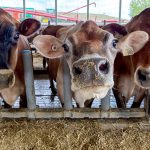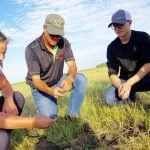Sask. initiative will set up laboratory | The University of Saskatchewan’s veterinary and ag colleges expected to make proposals
New funding from the Saskatchewan government will assist nuclear research at the University of Saskatchewan, part of which could go to agricultural projects.
Innovation minister Rob Norris signed a multi-year agreement last week for the province’s Innovation Saskatchewan agency to provide $30 million in funding for the Canadian Centre for Nuclear Innovation at the university.
And when the research centre puts out the call for proposals later this year, the CCNI’s interim director John Root said there could be interest from the Western College of Veterinary Medicine and the College of Agriculture and Bioresources.
Read Also

Forecast leans toward cooling trend
July saw below average temperatures, August came in with near to slightly above average temperatures and September built on this warming trend with well above average temperatures for the month.
“Part of what we’re doing is to help set up a lab to enable medical imaging research and development, and one of the applications there could be in getting a better idea about imaging in plants,” said Root, also the director of the National Research Council’s Canadian Beam Centre.
“We don’t quite know what a champion will come forward with as a proposal, but this is something that has been talked about over the summer and fall,” he added.
In a media release, four research areas were highlighted: nuclear medicine, material science, nuclear safety and small reactor technology.
Baljit Singh, a professor and associate dean at the veterinary college, called the announcement “a very exciting development.” The university, he said, is uniquely positioned for this kind of research, as it has faculty from all of the health sciences and houses a synchrotron at the Canadian Light Source, which will be used to develop medical isotopes.
“The major objective of the centre is to develop these isotopes to image, to see inside the human body the development of a tumour or any abnormalities within the blood vessels …” he said.
The college, he said, will be seeking partnerships with other departments and federal entities to develop new ways of imaging disease processes in animals and, ultimately, humans.
“We are going to be a major contributor to the science and application of the products coming out of the CCNI,” said Singh.
It’s work that won’t necessarily apply to livestock productions, he said, but could help veterinarians caring for horses. He cited laminitis and resulting lameness as a particular area of interest. New imaging methods would allow researchers to “see the fine structures in the feet of the horse using radioisotopes.”
“It’s a very broad field of possibilities and we’re very open to freedom of choice of people who want to be a participant in it,” said Root.
Root said the $30 million commitment will fund the centre for seven years.
While the CCNI will be legally distinct from the U of S, the university retains an interest in the centre’s activities and all of its academic and research activities will be reported.














